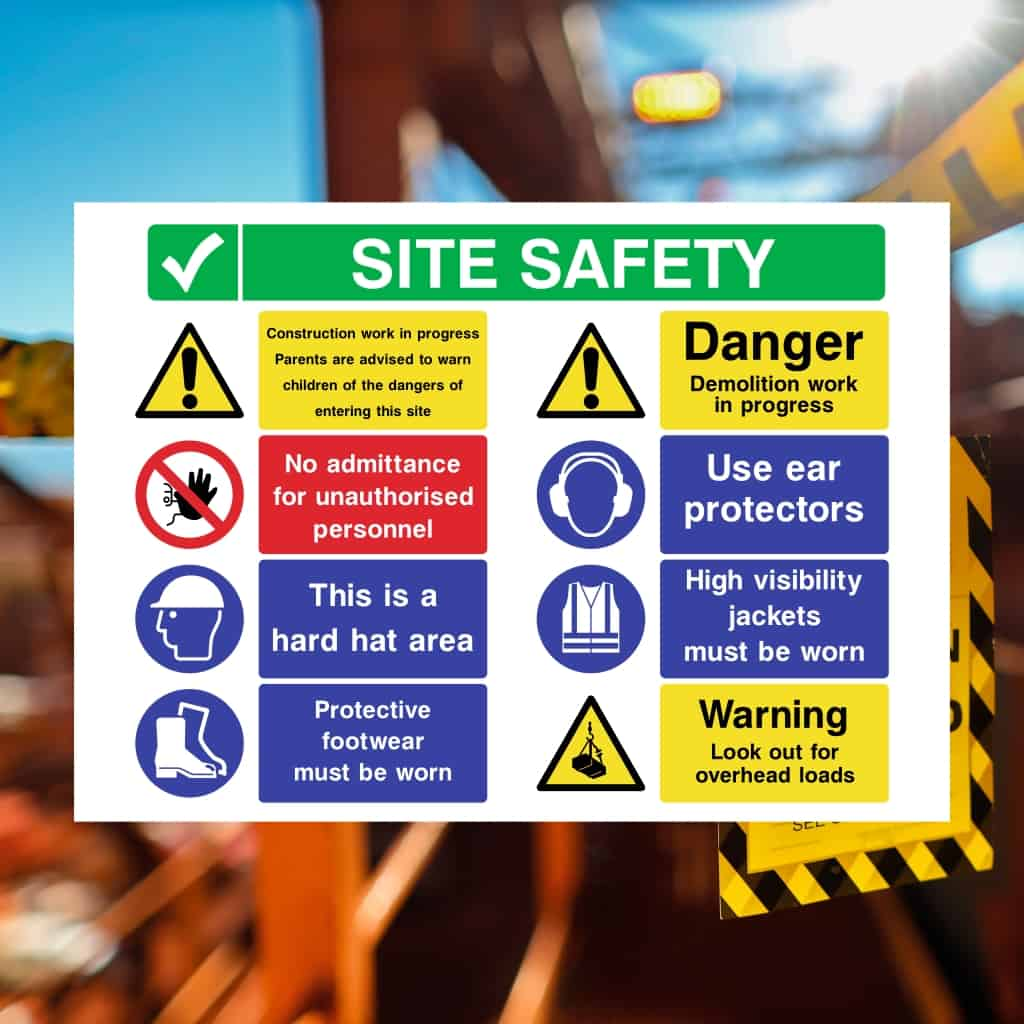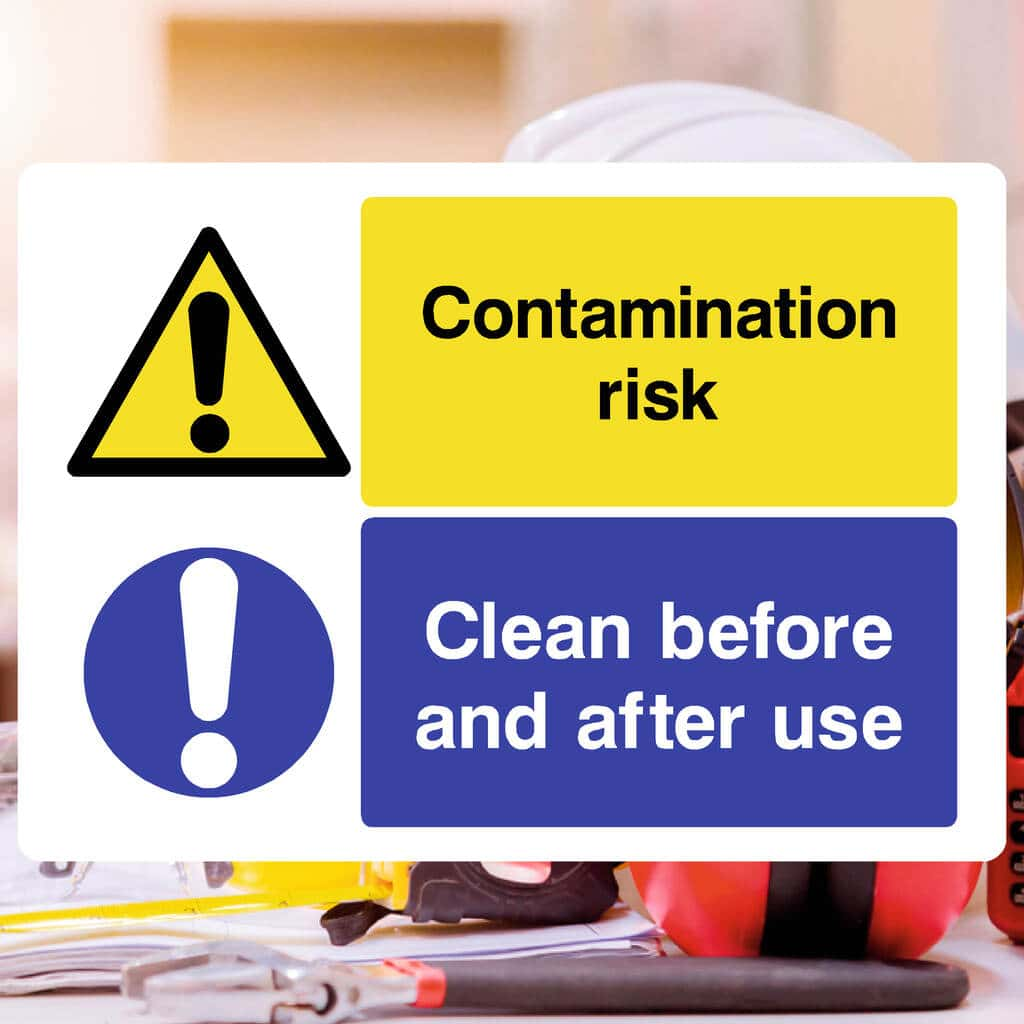Mandatory Safety Signs
Mandatory Safety Signs clearly instruct staff, visitors and contractors what they must do to stay safe—wear PPE, follow routes, close fire doors and more. Recognisable by a white symbol on a blue circle (as defined under UK Health and Safety Regulations), these signs help reduce accidents, communicate rules instantly, and ensure workplace compliance. Durable, compliant and visible, they’re essential for any site committed to safety.
Refine your search
-
Construction Site Keep Out Sign -
Construction Work Site Sign -
Contamination Risk Sign -
Contamination Risk Sign V2 -
Control The Virus Hands Face Space Sign Landscape -
Convector Oven Safety Sign -
Covid Secure Area Sign -
Crawling Boards Sign -
CSCS Cards Site Entry Sign -
Custom Ear Protection Sign -
Custom Ear Protectors Sign -
Custom Eye Protection Sign -
Custom Hand Protection Sign -
Custom Hard Hats Sign -
Custom Head Protection Sign -
Custom Hi Vis Vest Sign -
Custom Hi Visibility Vest Sign -
Custom Litter Sign -
Custom Litter Sign -
Custom Mandatory Sign -
Custom Mandatory Sign -
Custom Safety Gloves Sign -
Custom Wash Hands Sign -
Custom Washing Hands Sign
Frequently asked questions
Get quick solutions to your common mandatory sign buying questions
Mandatory signs are safety signs that indicate a specific action that must be carried out to comply with health and safety regulations. They are typically blue with a white pictogram and help ensure a safe working environment by instructing employees, visitors, and the public to follow essential safety procedures.
Under the Health and Safety (Safety Signs and Signals) Regulations 1996, mandatory signs are required wherever there is a significant risk to health and safety that cannot be completely eliminated by other means.
Mandatory signs should be displayed in locations where a specific action is legally required to ensure safety. Common locations include:
Construction sites – e.g. "Hard Hats Must Be Worn" to comply with PPE regulations.
Warehouses and factories – e.g. "High Visibility Clothing Must Be Worn" in areas with moving vehicles or machinery.
Laboratories and medical facilities – e.g. "Eye Protection Must Be Worn" to prevent exposure to hazardous substances.
Public buildings and offices – e.g. "Fire Door Keep Shut" to maintain fire safety compliance.
Hospitality and food preparation areas – e.g. "Hair Nets Must Be Worn" to adhere to hygiene regulations.
HSE guidelines state that signs should be placed clearly and visibly, ensuring they are understood by everyone on site.
Mandatory signs play a crucial role in accident prevention by:
Reducing risk – Ensuring that essential safety gear (PPE) is worn, such as gloves or safety boots.
Promoting awareness – Reminding workers and visitors of necessary precautions, such as using hand sanitiser in medical environments.
Improving compliance – Supporting businesses in meeting HSE and legal obligations, reducing the risk of fines and legal action.
Preventing fire hazards – Ensuring doors remain shut or that specific fire safety equipment is used correctly.
According to HSE statistics, many workplace injuries are preventable with proper signage and safety measures.
Yes. The BS EN ISO 7010:2012 standard requires that safety signs follow a consistent design, using:
A circular blue background
A white pictogram depicting the required action
Additional text where necessary to clarify instructions
Employers must ensure that signs are clearly visible, well-maintained, and free from obstruction.
Pictograms alone are acceptable if they are universally understood. However, HSE guidance recommends adding supplementary text in English where needed, particularly in workplaces with a diverse workforce or visitors unfamiliar with the pictogram meaning.
























